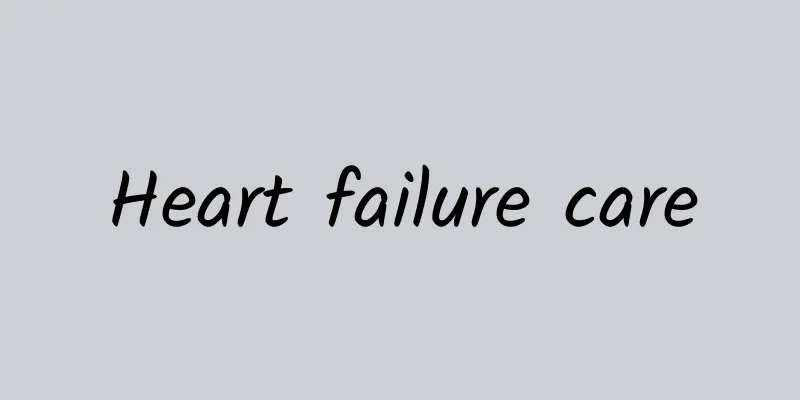Nursing care of patients with coma and shock

|
Just like you need to obtain a teaching certificate to become a teacher, you also need to obtain a medical certificate if you want to work as a medical staff in a hospital. Every year, there are many people who apply for the medical qualification certificate. If you want to pass the exam successfully, you need to study hard. At the same time, you need to read more questions and practice more questions. For example, the care of patients in coma and shock is a common question in the exam and you need to be proficient in it. So what are the key points in the care of patients in coma and shock? Shock is a pathological syndrome characterized by microcirculatory disorders, metabolic disorders and cell damage caused by a sharp decrease in effective circulating blood volume and insufficient tissue blood perfusion after the body is attacked by strong pathogenic factors. It is a severe systemic stress response. Shock is a key point in the nursing examination. Here we will sort out the nursing care of surgical shock patients. There are many ways to classify shock. According to the cause of shock, shock can be divided into five categories: hypovolemic shock, septic shock, cardiogenic shock, neurogenic shock and anaphylactic shock. Among them, hypovolemic shock and septic shock are the most common in surgery. According to the course of shock, the clinical manifestations of shock can be divided into the shock compensation phase and the shock suppression phase. (1) Compensatory shock period: This is the early stage of shock, during which the body still has a certain degree of compensatory function. The main symptoms of patients are mental tension, irritability, pale complexion, cold limbs, rapid pulse, rapid breathing, little change in blood pressure but small pulse compression, and normal or decreased urine volume. (2) Shock suppression stage: During this stage, the patient's consciousness changes significantly, with a dull expression, slow reaction, and even confusion or coma. There may be cyanosis of the lips and extremities, cold limbs, a rapid and weak pulse, and a progressive decrease in blood pressure. In severe cases, there is obvious cyanosis of the skin and mucous membranes, cold limbs, weak pulse, unmeasurable blood pressure, and little or no urine. If ecchymoses appear on the skin and mucous membranes or bleeding occurs in the nose, gums, or internal organs, it indicates the presence of DIC. If progressive dyspnea, irritability, and cyanosis occur and oxygen administration fails to improve the respiratory status, it indicates the development of ARDS. At this time, patients often develop MODS and die. Next, let's focus on the care of surgical shock patients. (1) Rapidly replenish blood volume and maintain fluid balance: open two or more intravenous routes, and the amount of fluid replacement can be comprehensively analyzed based on the two parameters of arterial blood pressure and central venous pressure. Accurately record the intake and output, and dynamically monitor the urine volume and urine specific gravity. If the patient's urine volume is >30ml/h, it indicates that the shock has improved. (2) Improve tissue perfusion and promote normal gas exchange: adopt a shock position to increase the amount of blood returning to the heart, improve blood supply to important organs, and at the same time promote the descent of the diaphragm and promote lung expansion. Use anti-shock pants if necessary. (3) Medication care: The use of vasoactive drugs should start with low concentration and slow speed. Closely monitor blood pressure changes during medication and adjust the concentration and infusion rate of the medication according to blood pressure. After blood pressure stabilizes, the drug concentration should be gradually reduced and the rate of withdrawal should be slowed down. (4) Maintain effective gas exchange: Maintain airway patency, correct hypoxia promptly, and administer oxygen via nasal cannula at an oxygen concentration of 40% to 50% and 6 to 8 L/min. For those with difficulty breathing, assist the doctor in performing endotracheal intubation or tracheotomy and use ventilator-assisted ventilation as soon as possible. (5) Keep warm and maintain normal body temperature. When keeping warm, avoid using hot water bottles, electric blankets and other methods to raise the patient's body surface temperature, so as to avoid burns, skin blood flow expansion, increased local tissue oxygen consumption and aggravated tissue hypoxia, causing further reduction in blood perfusion of important internal organs. (6) Pay attention to changes in the patient's condition, especially changes in vital signs, consciousness, and urine output. During shock, the body is in a state of stress, the immune function decreases, the resistance weakens, and it is prone to secondary infection. At this time, attention should be paid to preventing and controlling infection. (7) Prevent skin damage and accidental injuries. (8) Provide good psychological care and introduce knowledge related to shock to patients and their families to alleviate their fear. The above is the relevant knowledge points about the care of surgical shock patients. I hope it will be helpful to everyone! |
<<: Key points for observation of patients with shock
>>: What to do if the baby does not cooperate with the four-dimensional
Recommend
How to make oatmeal porridge for weight loss, delicious and weight loss oatmeal porridge
Oatmeal is a nutritious grain. Oatmeal is rich in...
Does climbing hurt your knees?
Mountain climbing is also an effective exercise. ...
What medicine can cure cholangitis quickly?
When cholangitis occurs, the patient will experie...
What to do if you vomit during chemotherapy? Pay attention to your diet
Many people must be familiar with the term chemot...
What is the reason for the growth of monkeys? Causes and symptoms of warts
Warts, scientifically known as common warts, are ...
How to treat chapped lips
Usually, staying up late, drinking, and eating sp...
What causes flatulence and farting?
What causes abdominal bloating and farting? This ...
What does a broken foot feel like?
Bone fracture is medically called microcrack frac...
Whitening and exfoliating, it has 7 major skin care benefits, don’t throw it away!
Rice is a staple food that we eat every day in ou...
The effect of corn silk boiled water on pregnant women
Pregnant women can drink water boiled with corn s...
Kudzu root powder calories
With the continuous progress of social life, peop...
How do finger cysts form?
Cysts on the fingers may be related to ganglion c...
Standard value of femoral length at 39 weeks
39 weeks is the late stage of pregnancy. At this ...
Why do double eyelids collapse?
Double eyelid collapse is also quite common in li...
How to perform surgical treatment for femoral head fracture?
The femoral head is the bone that connects the pe...









